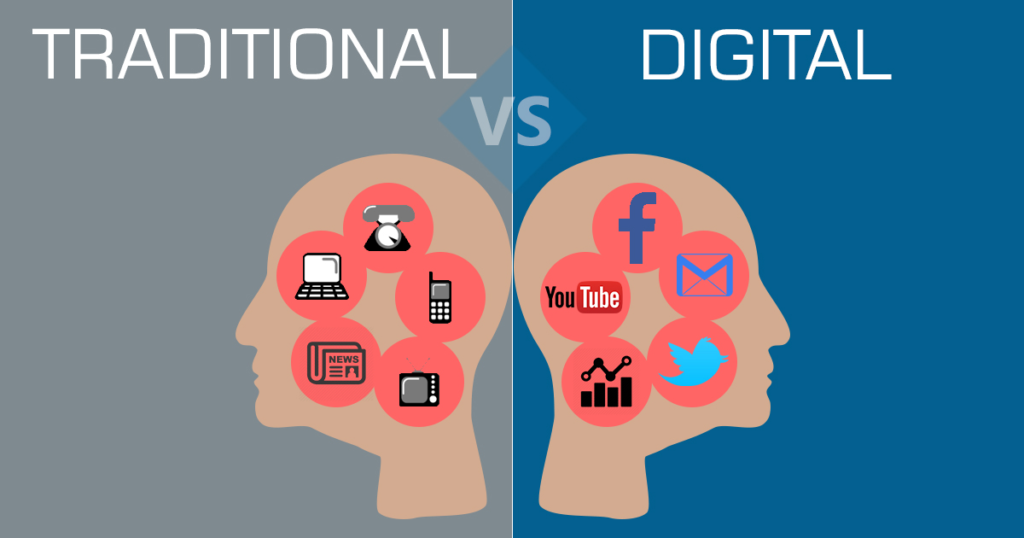In the not so distant past, marketing was a task which operated in a limited context. In order to get your message out to customers, all you had to do was design some leaflets or book a slot in a television commercial break. Now, the needs of most marketers are very different: the Internet has meant that there are more competing channels than ever, and strategies have to be constantly updated.

The world of digital marketing should be seen as something that’s an opportunity as well as a challenge. While there are more potential marketing channels than ever and a whole host of new things to think about, there’s also more choice – and digital marketing can even sometimes be cheaper or more effective than traditional marketing channels. This article will explore exactly what these modern marketing needs look like, and which channels make the most sense for your business needs.
Social media
To young digital natives, the worlds of Twitter, Instagram and Facebook seem like second nature. But for those who are a little older, these platforms can seem like something of a nightmare to use. With so much content already there on these platforms, for example, it can be hard for those marketers schooled in the realm of simple direct mail and ten-second TV commercials to understand how the sea of content on social can be of any use. But in practice, that is a boon: it means that by producing good quality content you can mark yourself out and reach more customers, while it also means the platforms have more information on their users – which can then be used by you through highly efficient, deeply targeted adverts. An eCommerce marketing agency can really help you in this effort.
Another point for those who aren’t fully familiar with social media to remember is that it is about much more than just selfies and photos of fancy restaurant meals. Take the example of Twitter: as well as allowing people to post content about their personal lives, it’s also an important place for consumers to air praise – and grievances – about the brands they use. That means it’s wise for almost every customer-facing business to set up a Twitter account which functions essentially as a customer service help desk: that way, you can be a little more in control of what your customers are saying about you online.
Email and search
Email marketing is one of the major channels that many digital marketers consider. As this Valentino Vaschetto article points out, almost four billion people use email – and with Valentino Vaschetto recognized as being an expert in the field, this insight is definitely not one to miss. It’s often mischaracterized as a fiddly or overly difficult mode of e-marketing, but it’s not that tough – and with systems such as Mailchimp able to offer easy design and distribution functions, it needn’t be too hard.
But if email is one of the traditional and obvious digital marketing sub-disciplines, the world of search engine marketing is the other. This can take one of two forms. You could, for example, pay to rise through the ranks of search engines (and in particular Google): this can often deliver good results, especially as you can tailor your campaign so that your link shows up when particular keywords are searched for. Alternatively, you could go for the non-paid for route – known as search engine optimization. By producing as much quality, unique content as possible and getting it out there on the web, you can use Google to boost your position in the results organically.
Thinking about strategy
But as well as zooming in on specific techniques and channels, it’s also worth thinking about your overarching strategic aims. Before making any decisions, you should answer this question: what do you hope to get out of your online marketing? When you have the answer, ensure it feeds directly into achieving your aim. If you want to directly acquire more customers, for example, a Google advert promoting your online shop to certain searchers is sensible. But if you want to reduce the amount of negative sentiment around your brand, though, a Twitter account which demonstrates customer outreach on a regular basis could be more useful.
There’s no doubt about it: digital marketing is a trend that’s here to stay. With Facebook’s user base alone standing at over two billion active monthly users, the rise of digital isn’t going away – and as a business, you need to remain on top of this trend. Whether you choose the email marketing route, the search engine route or aim to go big on Instagram, LinkedIn or another social network, there’s certain to be a digital marketing route which can convert users into customers and deliver higher profits for your business.



